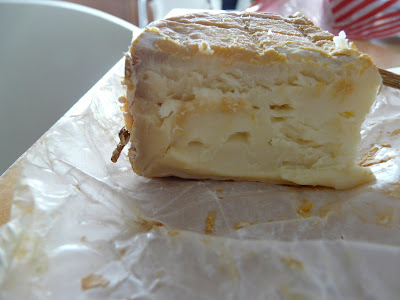
What makes these treats so special? They are extremely difficult to make. The ingredients must be of varying degrees of freshness, one extra beat of an egg white can result in a collapsing top, and the temperature of the oven and duration of cooking varies every time. Therefore, when Parisians find out there is an opportunity to sample these treats for free, and from some of the most famous patisseries in Paris, you can imagine the crowds.


After taking the train into the city with friend on a gorgeous sunny day, and stopping at Pierre Herme, one of the most famous sweet shops in the city, we came upon this waiting line, and decided to take advantage of the weather by strolling through St. Germain-des-Pres instead! We purchased a few macarons at a much less expensive shop nearby to fill us with energy for our walk. The neighborhood near Odeon was filled with people out taking advantage of the sun and blue skies!

The March weather was too good to be true, so we strolled to the plaza of the gorgeous St. Sulpice church (known by many tourists as the "church where the nun is killed in The Da Vinci Code"). Then over to St. Germain church, where a jazz quartet was setting the mood for spring.


 Our friend, Priscila and her mom (visiting from Brazil!) were in the area too, so we all stopped at the very famous cafe, Les Deux Magots, for a coffee.
Our friend, Priscila and her mom (visiting from Brazil!) were in the area too, so we all stopped at the very famous cafe, Les Deux Magots, for a coffee.
 Cafe au lait (coffee with milk)
Cafe au lait (coffee with milk) Priscila's delicious "cafe gourmand" which is an espresso served with some sweet treats.
Priscila's delicious "cafe gourmand" which is an espresso served with some sweet treats. The not-too-shabby view of St. Germain church, on the same plaza as the cafe
The not-too-shabby view of St. Germain church, on the same plaza as the cafeAs we sat outside, enjoying our coffee, a group of hundreds of people came flying down Boulevard St. Germain on rollerblades, for one of the popular rollerblading days where the streets are closed off to this massive crowd.
 We may have missed out on our free macarons, but we still enjoyed a lovely day in Paris!
We may have missed out on our free macarons, but we still enjoyed a lovely day in Paris!
*American macaroon image taken from
http://whatscookingamerica.net/History/CookieHistory.htm




















































